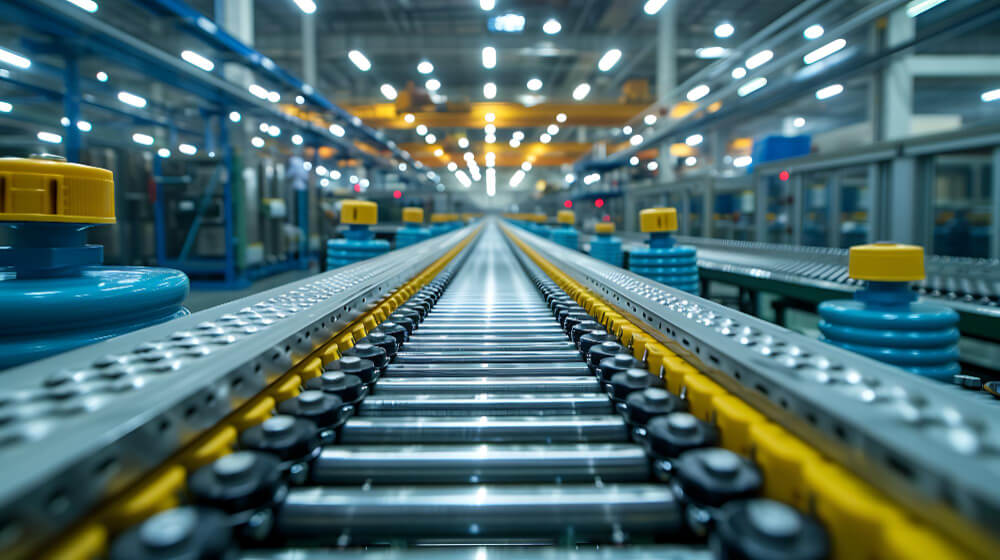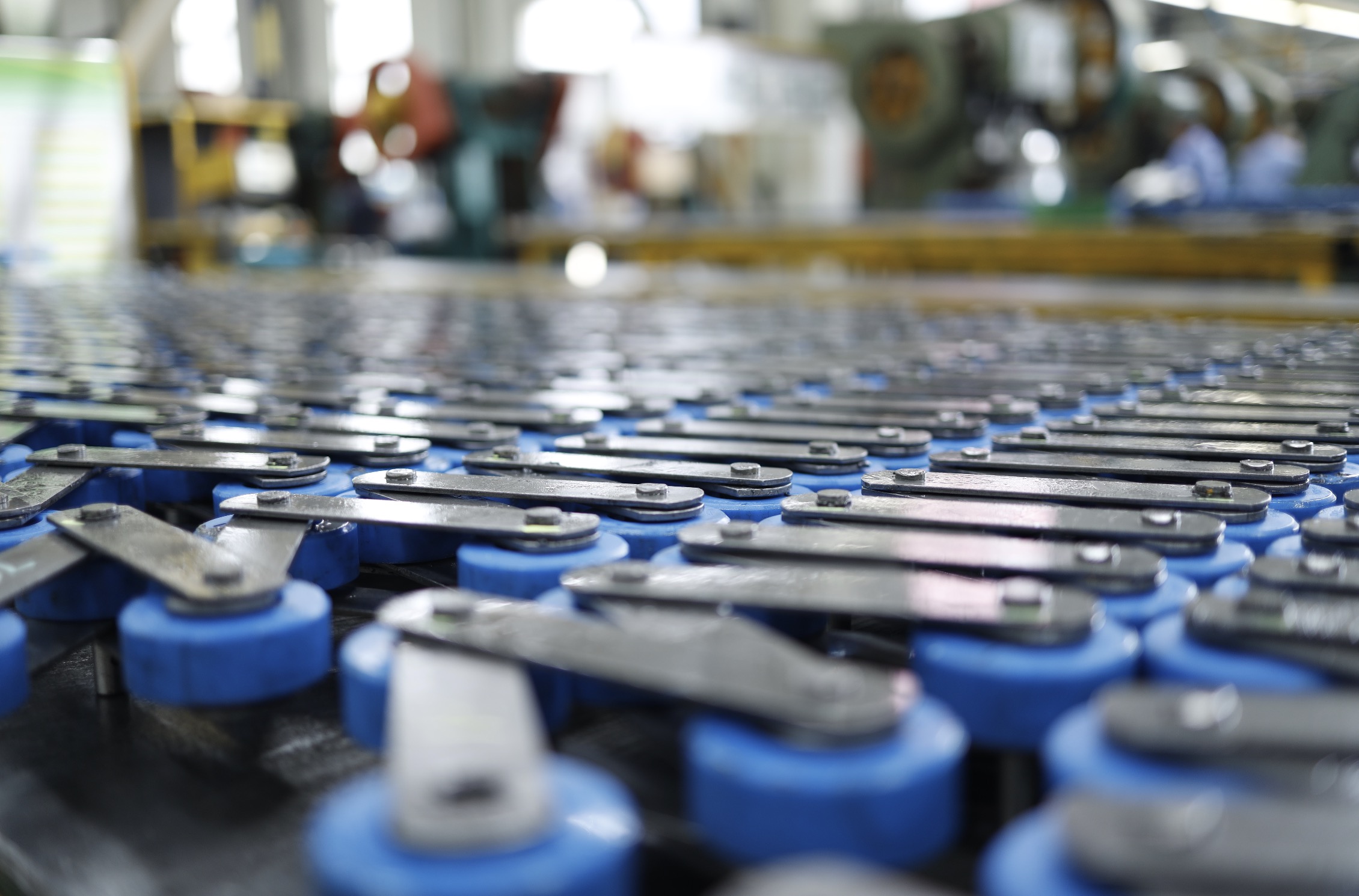While standard roller chains and heavy series roller chains share similar basic components, heavy series chains offer increased strength, durability, and load capacity compared to their standard counterparts.
What Are Standard and Heavy Series Roller Chains?
what is standard roller chain
What is a standard roller chain? A standard roller chain, also known as a single-strand roller chains, are the most common type of roller chain used in various industrial applications. They consist of a series of alternating inner and outer links connected by pins and bushings, with rollers mounted on the bushings to engage with sprocket teeth.
They come in different sizes, pitches, and strengths, such as ANSI 40 chain, ANSI 50 chain, ANSI 60 chain, and ANSI 80 chain.
| PROS | CONS |
| Suitable for a wide range of applications | Limited load capacity |
| Economical | Shorter service life |
| Readily available |
what is heavy series roller chain
Heavy series roller chains, also known as double-pitch roller chains, are designed for demanding industrial applications that require higher strength and load capacity. They feature larger pin diameters, thicker plates, and wider rollers compared to standard roller chains. Heavy series chains have a longer pitch than standard chains, allowing for larger sprocket sizes and increased load-bearing capacity.
| PROS | CONS |
| High strength and durability | Higher cost |
| Increased load capacity | Limited speed |
| Extended service life |
Between Standard vs Heavy Series Roller Chains
Pitch
The pitch, which is the distance between the centers of two adjacent pins, is a key difference between standard and heavy series roller chains. Standard roller chains, such as ANSI 40 chain, ANSI 50 chain, ANSI 60 chain, and ANSI 80 chain, have a smaller pitch compared to heavy series chains. The longer pitch of heavy series chains allows for the use of larger sprockets and increased load capacity.
Dimensions
Heavy series roller chains have larger overall dimensions compared to standard chains. They feature thicker plates, larger pin diameters, and wider rollers. These increased dimensions contribute to the higher strength and load capacity of heavy series chains.
Load Capacity
One of the primary differences between standard and heavy series roller chains is their load capacity. Heavy series chains are designed to handle higher loads compared to standard chains of the same pitch.
Sprocket Compatibility
Due to the difference in pitch, standard and heavy series roller chains require different sprocket sizes. Heavy series chains, with their longer pitch, necessitate the use of larger sprockets compared to standard chains. It is crucial to ensure compatibility between the chain and sprocket to avoid premature wear and performance issues.
Application Suitability
Standard roller chains, such as ANSI 40 chain, ANSI 50 chain, ANSI 60 chain, and ANSI 80 chain, are suitable for a wide range of light-duty to medium-duty applications. They are commonly used in conveying systems, power transmission, and machinery.
Heavy series chains are designed for demanding, high-load applications such as heavy-duty conveying, mining, and construction equipment.
Cost
Heavy series roller chains are generally more expensive than standard chains. The higher cost is justified by the improved performance and longer service life offered by heavy series chains in demanding applications.
Looking for quality yet affordable roller chains? Visit our website or contact us today for more info!



